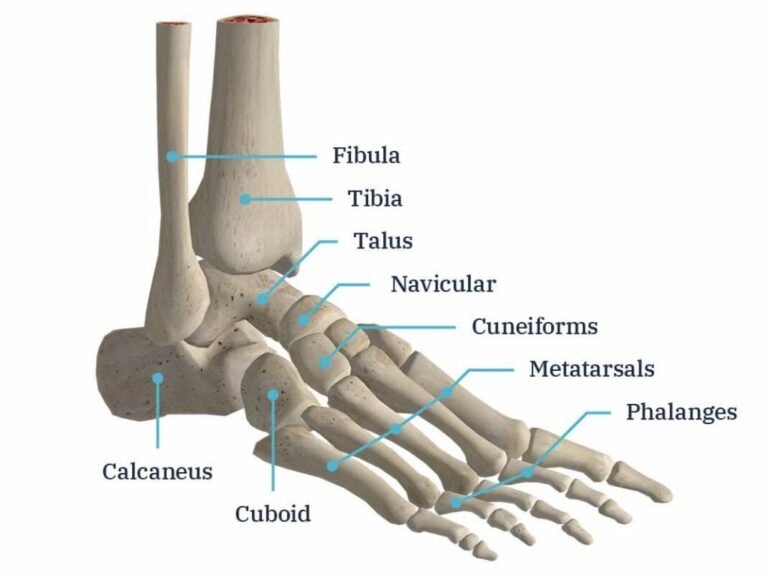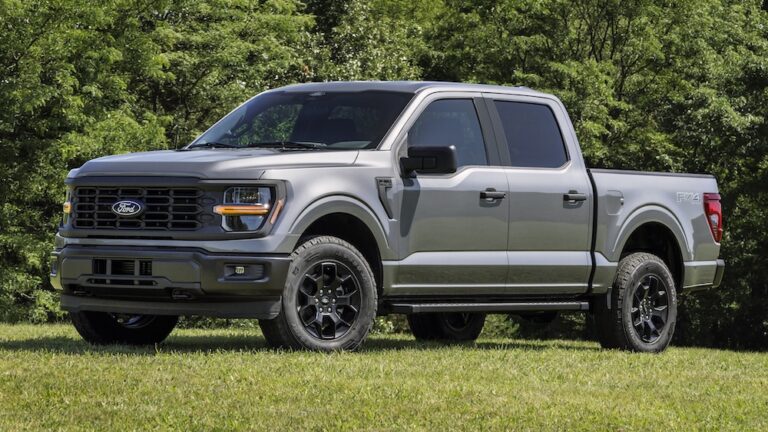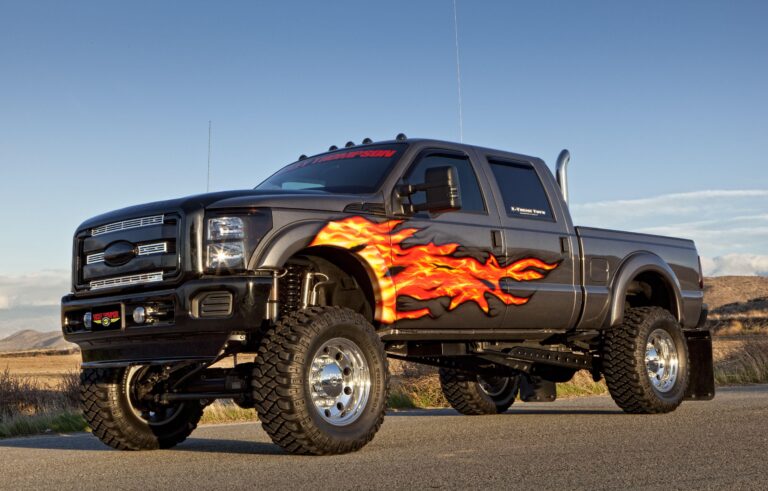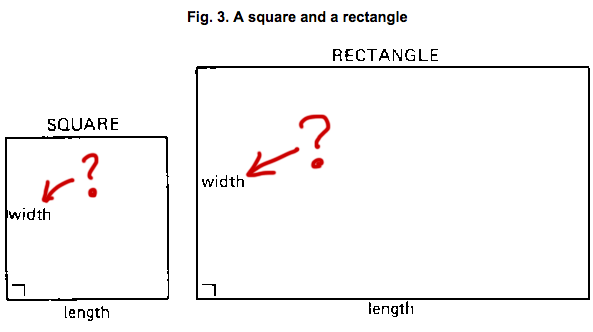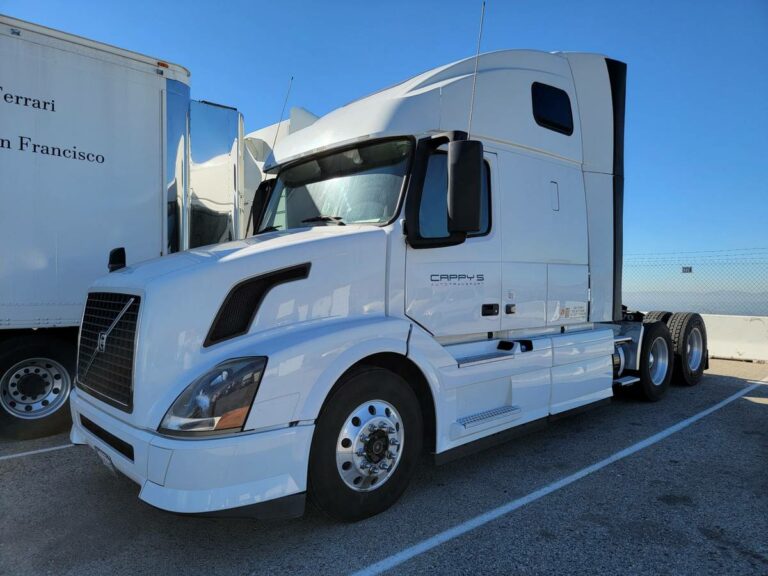Us Ft Truck Dimensions: A Comprehensive Guide to Navigating North America’s Roads
Us Ft Truck Dimensions: A Comprehensive Guide to Navigating North America’s Roads cars.truckstrend.com
Introduction: Unpacking the Criticality of Truck Dimensions
In the vast and intricate world of commercial logistics, few factors are as foundational and impactful as "Us Ft Truck Dimensions." This phrase, primarily referring to the standard and legally permissible sizes of trucks and their loads within the United States, measured in feet, dictates everything from route planning and infrastructure design to operational costs and safety protocols. Understanding these dimensions is not merely a matter of compliance; it’s a strategic imperative for fleet managers, owner-operators, freight brokers, and anyone involved in the movement of goods across North America.
Us Ft Truck Dimensions: A Comprehensive Guide to Navigating North America’s Roads
The seemingly straightforward measurements of length, width, and height conceal a complex web of federal and state regulations, historical precedents, and practical considerations. Adhering to these dimensions ensures road safety, prevents damage to infrastructure, and avoids costly fines and delays. Conversely, a lack of awareness can lead to disastrous consequences, including bridge strikes, road closures, and significant financial penalties. This comprehensive guide will delve into the nuances of US truck dimensions, offering practical insights and actionable advice to help you navigate this critical aspect of modern transportation.
I. Understanding the Basics: Key Dimensional Categories
To truly grasp the concept of US truck dimensions, it’s essential to break down the primary categories that govern vehicle size. These dimensions are not just arbitrary numbers; they are carefully calculated limits designed to ensure safety and preserve infrastructure.
Length
Length is perhaps the most scrutinized dimension, often varying based on the type of vehicle combination.
- Trailer Length: For semi-trailers (e.g., dry vans, reefers, flatbeds), the most common length is 53 feet. On the National Network (interstate highways and certain designated federal-aid primary routes), there is no federal maximum length limit for the overall combination of a tractor and a single trailer, as long as the trailer itself does not exceed state-specific limits (which are often set at 53 feet for practical purposes). However, states can impose limits on trailer lengths for non-National Network roads. Shorter trailers (e.g., 48 feet) are also common, particularly for specific applications or older equipment.
- Overall Combination Length: While the federal government doesn’t set a maximum overall length for tractor-semitrailer combinations on the National Network, states often have "reasonable access" laws that allow longer combinations to travel short distances off the network to reach terminals or service facilities. Certain states also permit longer combinations like doubles (twin trailers) or triples, each with specific length limits for the individual trailers and the overall combination.
- Federal Bridge Formula (Weight-Related Length): While not a direct length limit, the Federal Bridge Formula (FBF) indirectly influences vehicle length by regulating the maximum weight that can be carried on a group of axles, based on the distance between them. Longer vehicles with more axles can distribute weight more effectively, allowing for higher gross vehicle weights while protecting bridges from excessive concentrated loads.

Width
The standard maximum width for commercial motor vehicles in the US is 8 feet 6 inches (102 inches).
- Exclusions: Certain safety devices, such as mirrors, turn signal lamps, handholds, and splash guards, are generally excluded from this measurement, provided they do not extend beyond a certain distance (typically 6 inches on each side for mirrors).
- Oversize Permits: Loads exceeding 8 feet 6 inches in width are considered oversized and require special permits from state departments of transportation (DOTs), often necessitating escorts and specific travel times.

Height
The maximum legal height for commercial vehicles in the US is generally 13 feet 6 inches (162 inches).

- State Variations: While 13’6" is the most common standard, some states (e.g., California, Arizona) allow up to 14 feet, while others may have lower limits on specific roads.
- Bridge Clearances: This dimension is critical due to bridge and overpass clearances. Truck drivers must always be aware of their vehicle’s exact height and pay close attention to posted clearance signs to avoid dangerous and costly bridge strikes. GPS systems designed for trucks often include height restrictions.
Weight (Crucial Related Factor)
Although not a "dimension" in feet, weight is inextricably linked to truck size and capacity.
- Gross Vehicle Weight Rating (GVWR): The maximum operating weight of a single vehicle, as specified by the manufacturer.
- Gross Combination Weight Rating (GCWR): The maximum operating weight of a combination vehicle (e.g., truck and trailer), as specified by the manufacturer.
- Federal Weight Limit: The federal gross vehicle weight limit on the Interstate System is 80,000 pounds (40 tons). However, individual axle weight limits (20,000 pounds for a single axle, 34,000 pounds for a tandem axle) and the Federal Bridge Formula can effectively limit the total weight even if it’s below 80,000 pounds, depending on axle configuration and spacing.
- State Variations & Permits: States may have different weight limits on non-Interstate roads and issue permits for overweight loads, which often come with specific routing and escort requirements.
II. Federal vs. State Regulations: A Dual System
Navigating US truck dimensions is complicated by a dual regulatory system involving both federal and state laws.
Federal Regulations
The federal government primarily regulates truck dimensions on the National Network, which includes the Interstate Highway System and certain designated federal-aid primary roads. Key legislation, such as the Intermodal Surface Transportation Efficiency Act (ISTEA) of 1991, established national standards for length and width on these routes.
- Grandfathered Rights: ISTEA effectively "grandfathered" in existing state laws regarding truck lengths and widths that were in place prior to 1991, meaning states could maintain stricter limits on certain roads or allow longer/wider combinations than the new federal minimums, particularly for specific types of loads or vehicles.
- Minimums, Not Maximums: Federal regulations often set minimum lengths and widths that states must allow on the National Network, but they don’t necessarily set maximums for overall combination lengths, allowing states flexibility for longer configurations like doubles or triples where permitted.
State-Specific Regulations
Outside the National Network, and for aspects not explicitly covered by federal law (like specific height limits or permit requirements), individual states have significant authority to set their own regulations.
- Varying Height Limits: As mentioned, while 13’6" is common, some states permit 14’0" or have lower limits on certain routes.
- "Reasonable Access" Laws: States generally must allow "reasonable access" for commercial vehicles from the National Network to points of loading/unloading, service, and rest, even if these access roads have stricter dimension limits.
- Permitting for Oversize/Overweight Loads: The process, cost, and requirements for obtaining permits for loads exceeding standard dimensions or weights vary significantly from state to state. This is a critical consideration for specialized transport.
III. Types of Trucks and Their Typical Dimensions
Different types of commercial vehicles are designed for specific cargo and have typical dimensions that align with their function and legal limits.
-
Dry Van Trailers: The workhorses of the trucking industry.
- Length: Most commonly 53 ft, also 48 ft.
- Width: 8 ft 6 in (exterior), approx. 8 ft 2 in (interior).
- Height: 13 ft 6 in (exterior), approx. 9 ft to 9 ft 10 in (interior, depending on floor height).
- Application: General freight, non-perishable goods.
-
Refrigerated (Reefer) Trailers: Similar to dry vans but insulated and equipped with a refrigeration unit.
- Length: 53 ft or 48 ft.
- Width: 8 ft 6 in (exterior), slightly narrower interior due to insulation (approx. 8 ft).
- Height: 13 ft 6 in (exterior), slightly shorter interior due to insulation and floor design (approx. 8 ft 6 in to 9 ft).
- Application: Perishable goods, temperature-sensitive cargo.
-
Flatbed Trailers: Open trailers used for oversized or irregularly shaped cargo.
- Length: 48 ft or 53 ft.
- Width: 8 ft 6 in.
- Height: No inherent height limit for the trailer itself, but the load must clear bridges (typically 13 ft 6 in combined height). Deck height is usually 5 ft.
- Application: Construction materials, machinery, large equipment.
-
Tanker Trailers: Designed to transport liquids, gases, or dry bulk materials.
- Length: Varies significantly based on capacity and material, often shorter than dry vans (e.g., 40-50 ft).
- Width: 8 ft 6 in.
- Height: Can be taller due to cylindrical shape, but still within 13 ft 6 in.
- Application: Fuels, chemicals, milk, grains.
-
Lowboy/Removable Gooseneck (RGN) Trailers: Specialized trailers with a low deck height for transporting tall or heavy equipment.
- Length: Variable, often 40-53 ft main deck, with extendable options.
- Width: 8 ft 6 in (can be wider with permits).
- Height: Deck height as low as 18-24 inches, allowing for taller loads.
- Application: Heavy construction equipment, industrial machinery.
-
Straight Trucks (Box Trucks): Single-unit trucks without a separate trailer.
- Length: Varies widely, often 20-30 ft for the box.
- Width: 8 ft 6 in (exterior), similar interior dimensions to dry vans.
- Height: 12-13 ft (exterior).
- Application: Local deliveries, moving services, smaller freight.
IV. Practical Implications and Challenges
Understanding truck dimensions has profound practical implications for daily operations and long-term planning.
- Route Planning: Accurate dimensions are crucial for selecting appropriate routes, avoiding low bridges, narrow roads, and residential areas. Truck-specific GPS systems are invaluable tools for this.
- Loading and Unloading: Vehicle dimensions directly affect compatibility with loading docks, warehouse bay sizes, and forklift maneuverability. Incorrect dimensions can lead to inefficient loading, product damage, or inability to service a location.
- Permitting for Oversize Loads: When a load exceeds standard dimensions, obtaining permits is mandatory. This involves significant paperwork, fees, and often requires specific routes, travel times (e.g., no night travel, no weekend travel), pilot cars/escorts, and potentially even law enforcement escorts.
- Fuel Efficiency and Aerodynamics: Larger frontal areas (width and height) and less aerodynamic designs increase air resistance, leading to higher fuel consumption. This drives innovation in trailer skirts, boat tails, and aerodynamic fairings.
- Safety Considerations: Oversized loads can reduce visibility for the driver and other motorists, increase blind spots, and affect vehicle stability, especially in crosswinds or turns. Proper load securement and clear signage are paramount.
- Infrastructure Impact: Exceeding weight limits or striking infrastructure due to height violations can cause significant damage to roads, bridges, and tunnels, leading to costly repairs and potential legal liabilities.
V. Tips for Navigating Truck Dimensions
- Know Your Exact Dimensions: Measure your truck and typical loads accurately. Don’t rely on general specifications, as modifications or specific trailer designs can alter dimensions.
- Utilize Truck-Specific GPS: Invest in GPS devices or apps designed for commercial vehicles. These systems allow you to input your truck’s height, weight, and length, providing routes that avoid restrictions.
- Stay Updated on State Regulations: State laws can change. Regularly check DOT websites for the states you operate in, especially for height, specific route restrictions, and permitting requirements.
- Proper Load Securement: Ensure loads are secured correctly and do not extend beyond legal limits. Overhangs (front, rear, side) are often subject to specific regulations and may require flags or lights.
- Pre-Trip Inspections: Always conduct thorough pre-trip inspections, including checking for any visible issues that might affect dimensions (e.g., shifted load, deflated tires).
- Plan Ahead for Oversized Loads: If you anticipate an oversized load, start the permitting process well in advance. Factor in permit costs, escort fees, and potential delays into your logistics.
- Train Drivers: Ensure drivers are fully aware of their vehicle’s dimensions, the routes they are taking, and the importance of adhering to all regulations.
Table of Common US Truck/Trailer Dimensions & Associated Considerations
| Truck/Trailer Type | Typical Length (ft) | Typical Width (ft) | Typical Height (ft) | Key Considerations / Associated Costs (Estimates) |
|---|---|---|---|---|
| Dry Van Trailer | 48, 53 | 8.5 | 13.5 | Standard freight; New trailer: $30,000 – $60,000 |
| Reefer Trailer | 48, 53 | 8.5 | 13.5 | Temperature-controlled; New trailer: $60,000 – $100,000+ |
| Flatbed Trailer | 48, 53 | 8.5 | 13.5 (load limit) | Open cargo; New trailer: $30,000 – $55,000 |
| Tanker Trailer | 40-50 (varies) | 8.5 | 13.5 | Liquids/Gases; New trailer: $50,000 – $150,000+ |
| Lowboy/RGN Trailer | 40-53+ (extendable) | 8.5 (can be wider) | 18"-24" deck height | Heavy/tall equipment; New trailer: $70,000 – $200,000+ |
| Straight Truck (Box) | 20-30 (box length) | 8.5 | 12-13 | Local delivery; New truck: $50,000 – $150,000+ |
| Oversize Load Permit | Varies | >8.5 | >13.5 | State Dependent: $25 – $500+ per permit, per state, per trip. Escort services: $150 – $300+ per hour. |
| Overweight Load Permit | Varies | Varies | Varies | State Dependent: $50 – $1,000+ per permit, per state, per trip (often weight-based fees). |
| Typical Truck-Specific GPS | N/A | N/A | N/A | $300 – $700 (one-time purchase for device) |
Note: Prices for trailers and trucks are estimates for new units and can vary significantly based on manufacturer, features, and market conditions. Permit costs are highly variable by state and load specifics.
Frequently Asked Questions (FAQ) about US Truck Dimensions
Q1: What is the maximum legal length for a semi-trailer in the US?
A1: On the National Network, the most common semi-trailer length is 53 feet. While there’s no federal maximum for the overall tractor-trailer combination length on these routes, states often have practical limits and restrictions for access roads.
Q2: What is the maximum legal height for a truck in the US?
A2: Generally, the maximum legal height is 13 feet 6 inches (162 inches). However, some states allow up to 14 feet, and it’s crucial to check specific state regulations and bridge clearances for your route.
Q3: Are truck dimensions measured differently for different types of trucks?
A3: The fundamental width and height limits (8’6" and 13’6") are largely consistent for most commercial vehicles. However, length limits vary significantly based on the type of trailer (e.g., dry van vs. tanker vs. double trailers) and whether it’s an overall combination length or individual trailer length.
Q4: What is the Federal Bridge Formula and how does it relate to dimensions?
A4: The Federal Bridge Formula (FBF) is a mathematical equation that dictates the maximum weight that can be carried on a group of axles, based on the distance between the extreme axles of that group. While it directly regulates weight, it indirectly influences truck length and axle spacing, as longer vehicles with more spread-out axles can legally carry more weight without exceeding bridge capacity.
Q5: Do mirrors count towards the overall width of a truck?
A5: Generally, no. Most regulations exclude safety devices like mirrors, turn signal lamps, and handholds from the overall width measurement, provided they do not extend beyond a certain distance (e.g., 6 inches on each side).
Q6: How do I get a permit for an oversized load?
A6: You must apply for an oversized (and/or overweight) permit through the Department of Transportation (DOT) of each state your load will travel through. The process involves submitting applications, paying fees, and often providing details about the load, vehicle, and proposed route. Requirements, costs, and processing times vary by state. Many states have online portals for permit applications.
Q7: Can I drive an oversized load at any time?
A7: No. Oversized load permits often come with specific travel restrictions, such as no travel during peak hours, holidays, weekends, or at night. Some require pilot cars or law enforcement escorts, depending on the degree of oversizing.
Conclusion: Mastering the Dimensions of Success
Understanding and meticulously adhering to "Us Ft Truck Dimensions" is not merely a regulatory burden; it is a cornerstone of safe, efficient, and profitable commercial transportation in the United States. From the standard 53-foot dry van to specialized heavy haulers, every vehicle on the road operates within a framework of carefully defined size limits.
By grasping the interplay between federal and state regulations, recognizing the typical dimensions of various truck types, and applying practical strategies for route planning and compliance, transportation professionals can mitigate risks, avoid costly penalties, and optimize their logistics operations. The landscape of truck dimensions is dynamic, influenced by technological advancements, infrastructure development, and evolving safety standards. Therefore, continuous education and vigilance remain paramount for anyone navigating the vast network of US roads. In the world of trucking, mastering dimensions is truly mastering the road to success.

